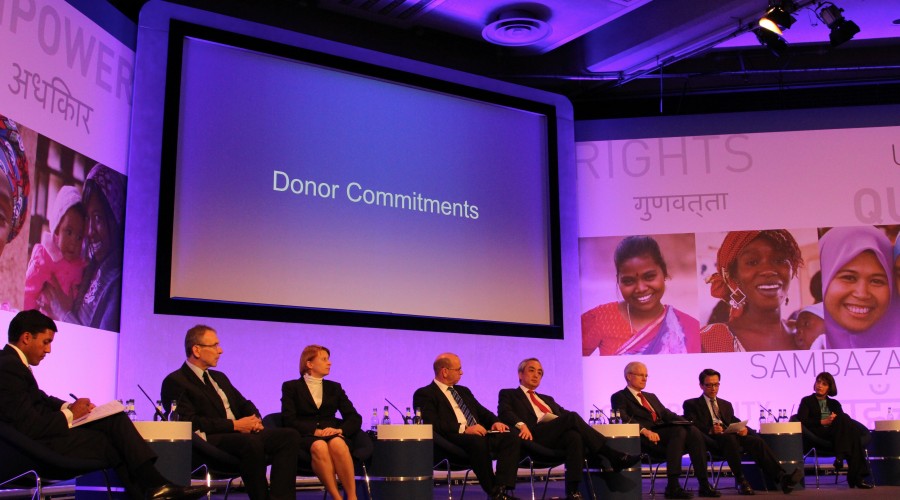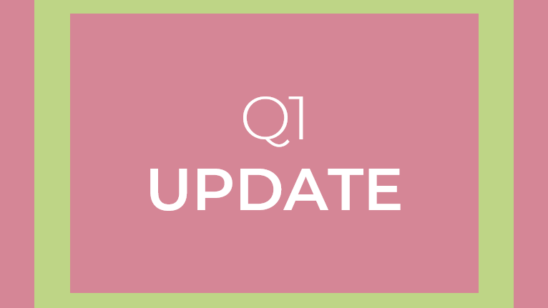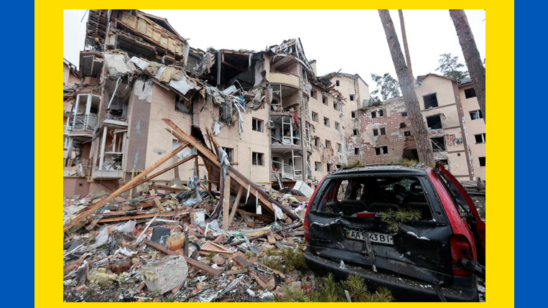
Who Funds Who? Donors by Context4 min read
Who funds where? It is one of the simplest and important questions when it comes to humanitarian aid. Yet, we’re not sure all that information has been collated before into one place that’s easy-to-read and accessible. If it is out there, maybe it’s “on display in the bottom of a locked filing cabinet stuck in a disused lavatory with a sign on the door saying ‘Beware of the Leopard'”, to quote Douglas Adams.
So this week it’s not one cohesive story that flows, but one simple table that shows funding flows. We’ve noted a number of observations that come to mind, and we’d love you to add thoughts you have in the comments.
Who are the top five donors by context?
The table below shows the top five donors by context that had a response plan in 2020 or 2021. We’ve taken the total of funding across those two years. This is because we want to smooth out any anomalies or noise that you might find in any one year, but then also we want quite a recent view of what donors are funding. For more on the methodology and what we included and didn’t include, go to the bottom of the story.
Lastly, bear in mind that this is the past. This doesn’t necessarily reflect how things are right now (especially in light of Ukraine and anticipated shifts in donor behaviour), and/or how things will be in the future.
There are a number of thoughts that the table provokes, and there are some things that jump out from the table and hit you in the face.
A top-heavy funding system
Observation #1: The sheer dominance of the United States is striking, being the top donor to nearly all response plans that we looked at. The United States is the top donor to 32 out of 37 response plans over that period. Of these 32 response plans, the United States never fails to give less than 25% of response plan funding. And when it comes to the other 5 response plans, they are in the top donors for 3 of these.
Observation #2: The dependence of response plans on one donor is also noticeable. Most of the contexts we looked at are dependent on one donor for more than one third of their funding. This is in large part due to US dominance, but it’s also the case in contexts with Flash Appeals that have low funding requirements, such as in Djibouti and Lesotho in 2020.
The supporting cast
Observation #3: The European Union, Germany and the UK constitute the second tier of donors who contribute to response plans. The EU make the top five donors 31 times out of 37, whilst Germany made the top five 27 times out of 37, and the UK made the top five 19 times out of 37.
Observation #4: The Central Emergency Response Fund (CERF) is a critical source of funding for many crises. CERF – the global pooled fund – makes the top five donor list in 21 out of 37 crises, and was the top donor to 3 contexts, and the second top donor in another 2 contexts. These five contexts were Djibouti, DPRK, Kenya, Mozambique, and Zambia. Given these crises weren’t necessarily those with the highest amounts of funding or media profile, it seems like the CERF is fulfiling it’s function of funding underfunded crises, at least for these contexts.
The geopolitics of humanitarian aid
Observation #5: National interests are reflected in where donors give humanitarian funding to (unsurprisingly!). Consider, for example, the really high percentage of overall funding that the United States constitutes in the response plans in the Americas. Or consider that the only contexts where Saudi Arabia makes the top five donors are Pakistan and Yemen. Or how about the fact that both South Korea and Russia make the top five donors to the DPRK (North Korea). Of course, this is not an exhaustive list of national interests, but hints to the fact that behind the application of the humanitarian principles of humanity and impartiality on the ground, the choice of where to put that funding might follow a different set of principles.
We’ll be bookmarking this page as a simple reference when we want to understand the funding in any given context. We hope you do the same!
Methodology and Sources
Data Source: All data was extracted from FTS on 27th February 2022. Data was extracted from response plan pages, such as this.
Methodology: After data collection, donors are then grouped. For example, all funding from EU institutions is grouped as “EU”. Another example is that from UNICEF National Committees, which is then grouped as “UNICEF”. Response plans are also grouped by context. For example, the Cabo Delgado Response Plan of 2020 and the Mozambique 2021 HRP are grouped as “Mozambique”. Funding is then looked at across these two dimensions (context and donor) which reflect these groupings and response plan funding.
What is included in the analysis: All funding to Humanitarian Response Plans, Flash Appeals, and Other Plans in 2020 and 2021.
What is not included in the analysis: Any response plans relating to COVID-19, and Regional Refugee Response Plans.



Greetings from Tanzania, i am currently looking for any funding donor how can you assist me with my organization.